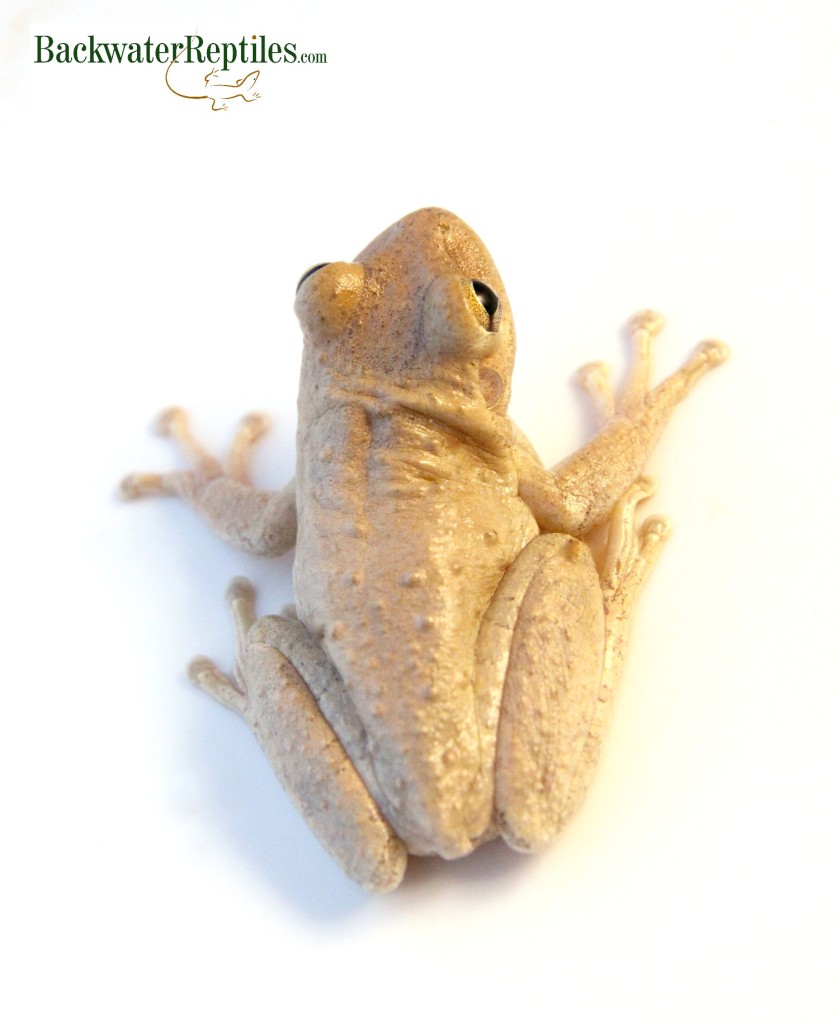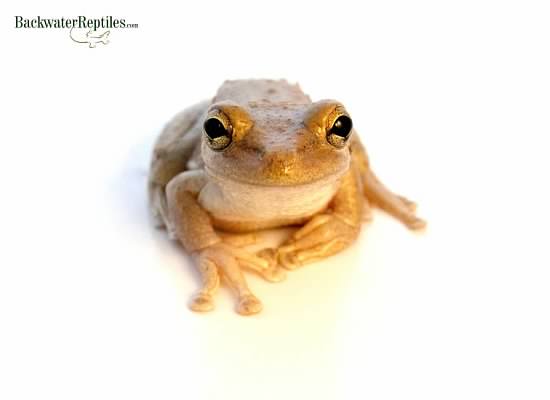Are you considering a pet frog but you’re unsure what species to go with? Do you want a large, hardy, and entertaining species? If you answered yes to these questions, we think a Cuban tree frog would make a great pet for you.
In this article, we’ll lay out the care guidelines for Cuban tree frogs as well as go into more detail on why we think these frogs are great for herp enthusiasts of all ages and levels of experience.

Cuban tree frogs as pets
Originally, Cuban tree frogs come from Cuba, but nowadays, they are commonplace in states like Florida. Because they adapt so well, eat ravenously, grow to quite large sizes, and are so prevalent, they have come to be seen by many as an invasive species. These traits that make Cuban tree frogs so successful in the wild are also what make them very well suited to captivity.
Cuban Tree Frogs are actually the largest species of tree frog living in North America. Females can grow to be nearly six inches in length, while males will stay a bit smaller. Although they are long frogs, they stay quite slender with powerful hind legs designed for long jumps.
In general, Cuban tree frogs are a light brown, beige, or grey color, but can also be a darker brown or whitish color. They also possess the capability to slightly alter their color depending on their surroundings and temperament.
If you keep a Cuban tree frog for a pet, be prepared to feed it…lots. They have immense appetites and seem to prefer crickets in captivity. In addition to crickets, roaches, night crawlers, hornworms, and reptiworms make great treats and supplements. Fully matured, adult frogs have also been known to eat pinkie mice on occasion. We advise feeding pinkies in moderation because if consumed in excess or too frequently, your frog will become overweight. But the bottom line is – you will definitely enjoy watching your Cuban tree frog pig out at mealtime.

A single Cuban tree frog will thrive in a 15 or 20 gallon tank with plenty of foliage to climb on and hide in. You can keep males and females together, but make sure the frogs are of comparable size to one another. Larger Cuban tree frogs have been reported to eat smaller ones, so you don’t want them to cannibalize each other.
Good substrates for Cuban tree frogs are peat moss, potting soil, and coconut fiber. These all hold moisture well, but won’t necessarily become soggy. In addition to the plants (both real and fake are acceptable), you should provide a hide space such as a log or a coconut half that stays on the ground in the cage. While Cuban tree frogs are mostly arboreal, they do at times come down to the ground of their enclosure.
A water dish that is large enough for your frog to comfortably submerge itself should also be provided on the bottom of the cage. You can also put a small rock or platform inside the water dish so that it’s easier for the frog to get in and out of the water pool. Make sure that the water stays fresh because stagnant water can make your frog ill.
If you decide to keep a male with a female or two, expect to hear loud, barking noises during the mating season at night time. Cuban tree frogs are known for their noisy mating calls which have been described as sounding like small dog barks. If successful mating occurs, the female will deposit her eggs in the water dish.

Conclusion
If you want a large frog with lots of personality and heart, we recommend getting a pet Cuban tree frog. Not only are these frogs large, but they are pretty easy to keep and will provide lots of entertainment at feeding time.
If you think you are ready to welcome a Cuban tree frog into your home, you can buy one (or a pair!) from Backwater Reptiles.
